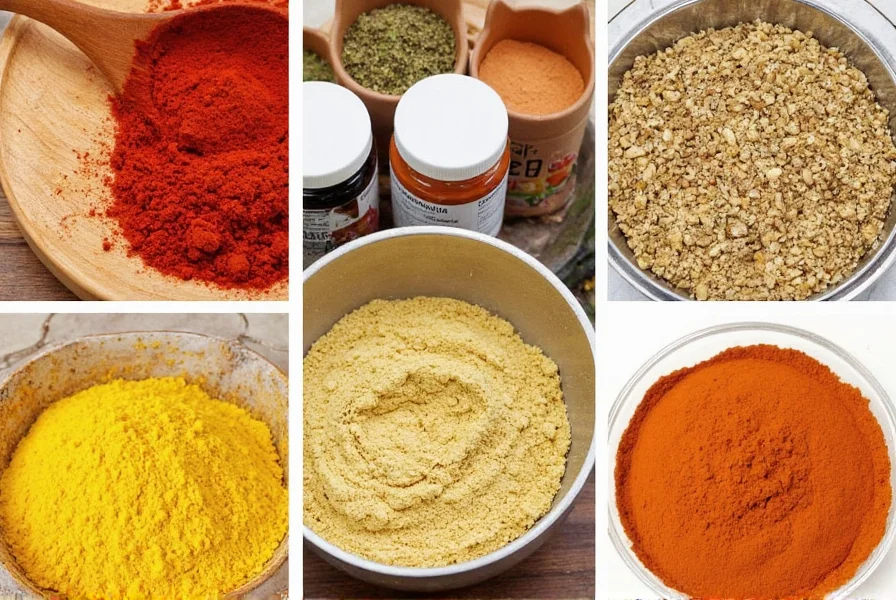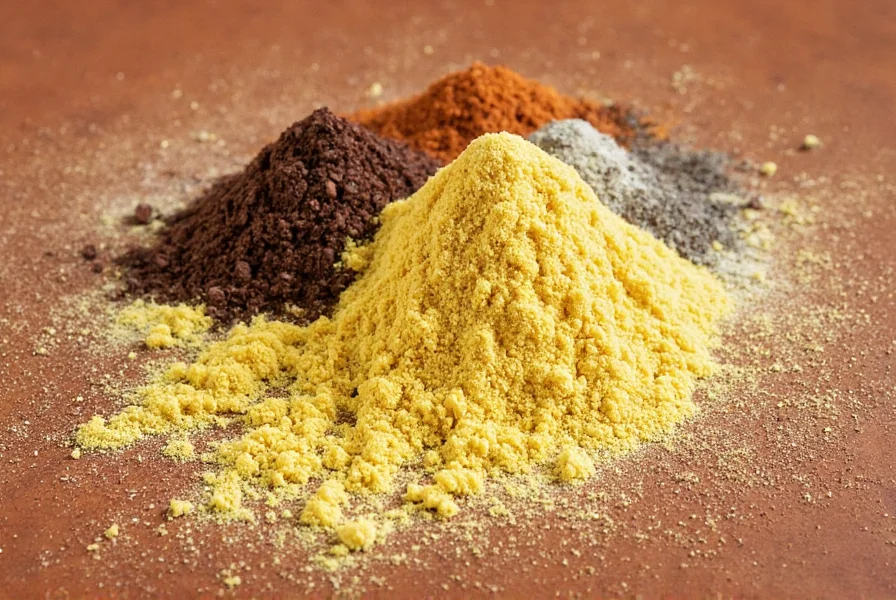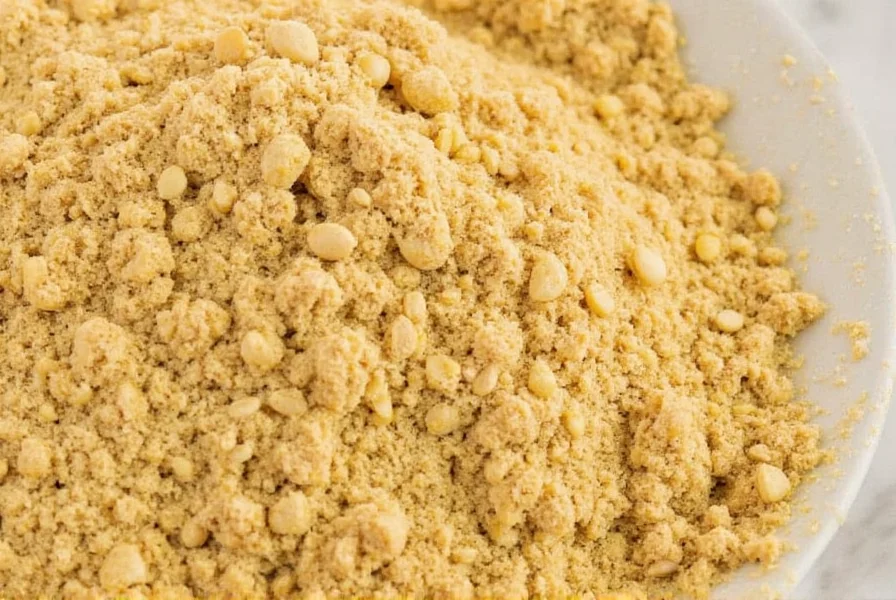File Powder for Gumbo: What It Is and Why It Matters

File powder is a traditional thickening and flavoring agent made from dried and ground sassafras leaves, essential in Cajun and Creole gumbo recipes. It provides a unique earthy, floral taste while thickening the broth to a velvety consistency—without the need for roux or okra. This guide covers everything you need to know about using file powder safely and effectively in gumbo, including proper techniques, common mistakes to avoid, and trusted brand recommendations.
What Exactly Is File Powder?

File powder (filé powder) is made from the dried and ground leaves of the sassafras albidum tree, native to North America. Indigenous tribes used it for medicinal and culinary purposes long before European settlers arrived. In modern Louisiana cuisine, it's a staple for gumbo, offering both thickening and a distinct woodsy, peppery flavor that complements seafood, poultry, and vegetables.
Important safety note: While sassafras root bark contains safrole (a regulated compound), FDA-approved food-grade file powder made from leaves contains negligible safrole levels and is safe for culinary use in typical quantities (up to 1.5 tsp per pot).
The Flavor Profile of File Powder
File powder adds a complex, layered flavor to gumbo that can't be replicated by other thickeners. Here's what to expect:
- Earthy: Deep, grounding notes reminiscent of damp soil and forest floors.
- Floral: Subtle floral aroma that enhances the dish's complexity without overpowering.
- Peppery: Mild heat similar to white pepper, adding gentle warmth.
- Herbal: A unique blend of thyme and basil with a wild, uncultivated twist.
Use sparingly: Too much can create a bitter or medicinal taste, while too little won't deliver the signature flavor.
How to Use File Powder in Gumbo Like a Pro
Correct timing and measurement are critical for perfect results. Here's the expert method:
Timing is Everything
- Never add file powder while cooking. High heat causes it to become stringy or gelatinous.
- Add after removing from heat when the gumbo cools to 160°F (70°C).
- Stir gently but thoroughly until fully incorporated.
Portion Control
| Serving Size | Recommended Amount of File Powder |
|---|---|
| 4 servings | 1/2 teaspoon |
| 6–8 servings | 1 teaspoon |
| 10+ servings | 1 1/2 teaspoons |
Buying Guide: How to Choose the Best File Powder
Not all file powders are equal. Prioritize these features for quality:
Key Features to Look For:
- Purity: Only "sassafras leaf" listed as an ingredient—no fillers or anti-caking agents.
- Freshness: Check expiration dates; potency degrades after 6-12 months.
- Source: Look for sustainably harvested sassafras from trusted regions (e.g., Louisiana or Mississippi).
- Texture: Fine, uniform powder without clumps or coarse particles.
Top Picks for Best File Powders
| Brand | Features | Best For | Price Range |
|---|---|---|---|
| Creole Essence | Pure sassafras leaf, organic, USA-sourced | Authentic Louisiana-style gumbo | $8–$10 per oz |
| Penzeys Spices | No additives, strong aromatic quality | Home cooks valuing freshness | $9 per oz |
| McCormick Culinary | Commercial-grade, widely available | Restaurants and large batches | $6 per oz |
Recipe Suggestions Using File Powder
Expand your culinary repertoire beyond traditional gumbo with these creative uses:
- Okra-Free Gumbo: Use file powder as the sole thickener for a smoother texture.
- File-Rubbed Chicken: Mix with smoked paprika, garlic powder, and salt for a Southern-style rub.
- File Butter: Blend with softened butter, lemon zest, and fresh chives for steak or seafood topping.
- Seafood Stew: Add 1/4 tsp at the end for depth without overpowering delicate flavors.
Common Mistakes When Using File Powder (and How to Avoid Them)
| Mistake | Why It Happens | How to Fix It |
|---|---|---|
| Adding file too early | Heat causes slimy texture and clumping | Add only after removing pot from heat (160°F/70°C) |
| Using too much | Overpowering bitter or medicinal taste | Start with 1/2 tsp per 4 servings; taste and adjust |
| Old or stale file powder | Flat, dull flavor | Replace every 6 months; store properly |
Storage Tips for Keeping Your File Powder Fresh
- Airtight container: Use glass jars or mylar bags to block moisture and air.
- Cool, dark place: Store in a pantry away from light and heat sources.
- Dry utensils only: Prevent clumping by using completely dry spoons.
- Label with date: Ideal shelf life is 6-12 months; discard if color fades or aroma weakens.
Frequently Asked Questions About File Powder
What is file powder used for in gumbo?
File powder serves two key purposes in gumbo: it thickens the broth to a rich, velvety consistency and adds a distinctive earthy, floral flavor with subtle peppery notes. Unlike roux or okra, it's added at the end of cooking to preserve its unique texture and taste.
Is file powder the same as gumbo powder?
No. File powder is made solely from ground sassafras leaves. Gumbo powder is a pre-mixed seasoning blend containing file powder plus other spices like paprika, garlic, and cayenne. Always check labels to avoid confusion.
Can I cook with file powder or must it be added after cooking?
Never cook file powder. High heat causes it to become slimy and stringy. Always stir it into gumbo after removing the pot from heat, once the temperature drops below 160°F (70°C), to maintain proper texture.
Is file powder safe to consume?
Yes, when used as directed. The FDA approves food-grade file powder made from sassafras leaves for culinary use. While sassafras root bark contains safrole (a regulated compound), leaves used for file powder contain negligible safrole levels and are safe in typical culinary quantities (up to 1.5 tsp per pot).
What can I use if I don't have file powder?
For thickening: use roux or okra. For flavor substitution: a mix of 1/4 tsp ground thyme + 1/8 tsp white pepper per teaspoon of file powder. Note that no substitute replicates file powder's exact earthy-floral profile.
Why File Powder Belongs in Your Kitchen

File powder isn't just for gumbo—it's a versatile, culturally significant ingredient that elevates any dish with its unique flavor and thickening properties. By mastering its use, you'll honor Louisiana culinary traditions while creating restaurant-quality meals at home. Always prioritize purity, freshness, and proper technique to get the most from this essential spice.










 浙公网安备
33010002000092号
浙公网安备
33010002000092号 浙B2-20120091-4
浙B2-20120091-4